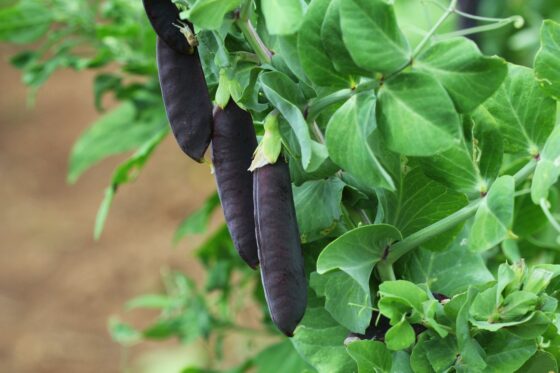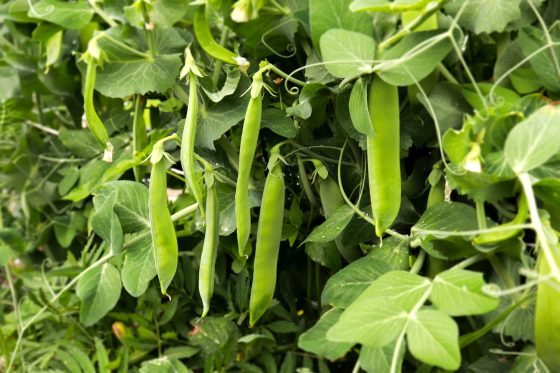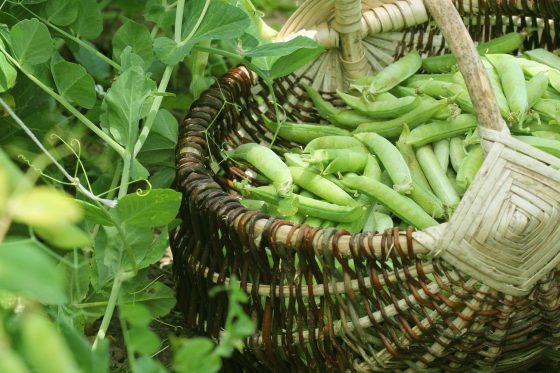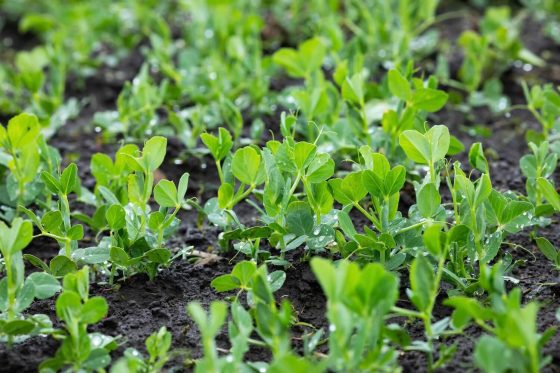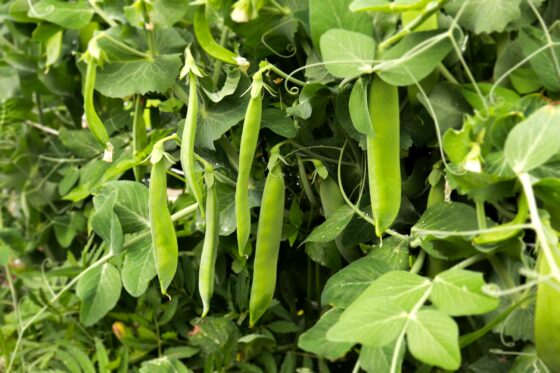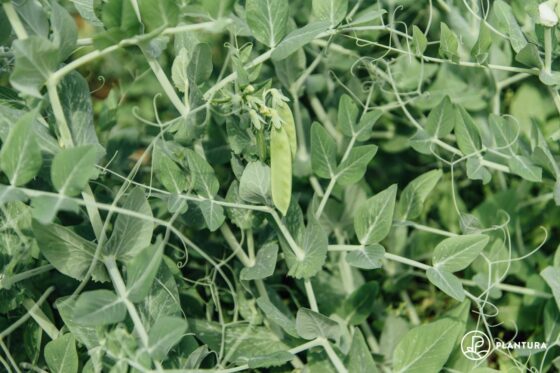Supporting peas: how to use a trellis to support peas
Grown and loved for their wonderfully sweet taste, peas can grow to a range of different heights. Discover all about supporting peas and which varieties might need a trellis.
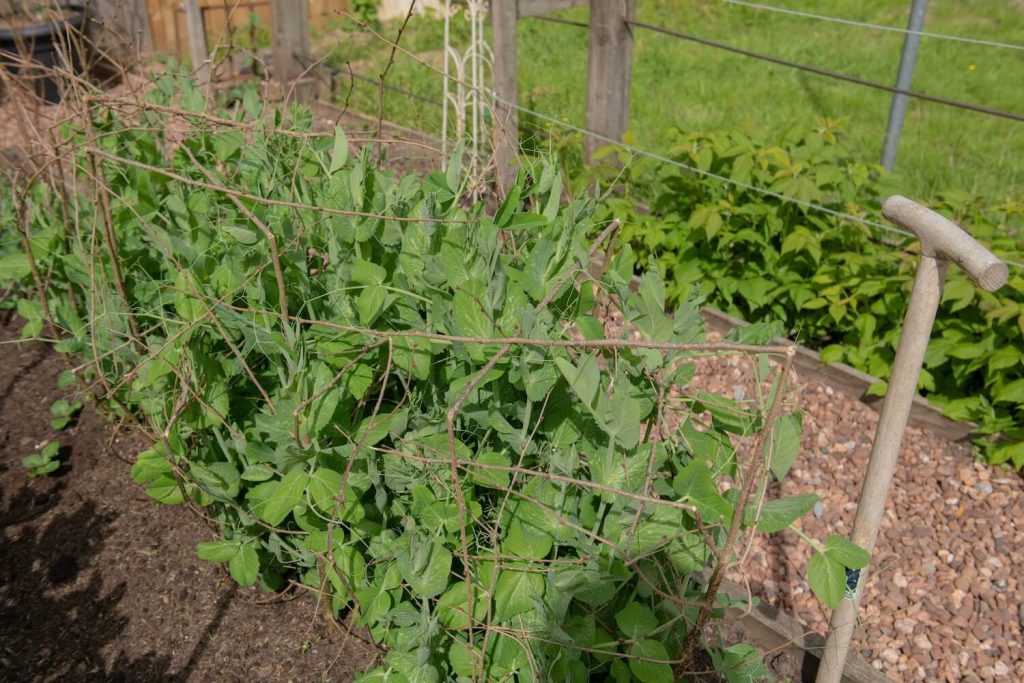
With their delicious flavour and nutritional benefits, it is no surprise that peas (Pisum sativum) are a favourite of home and allotment growers. However, peas are natural climbers, so most varieties require a support for their tendrils to cling to. Read on to find out about the different types of pea supports available and how to build your own.
Contents
Do all types of peas need a trellis?
There are many different pea varieties from the humble garden pea or petit pois (Pisum sativum var. sativum) to mangetout and sugar snaps (Pisum sativum var. marcrocarpon). Not all peas require a support though, as some dwarf cultivars only grow around 25cm tall and are self-supporting. However, even these compact varieties can sometimes benefit from a small support to hold them up, which increases ventilation and helps prevent disease.
As a general guide, peas that grow up to 50 to 60cm tall may not need support but those that grow taller than this will need a trellis or frame for them to climb up.
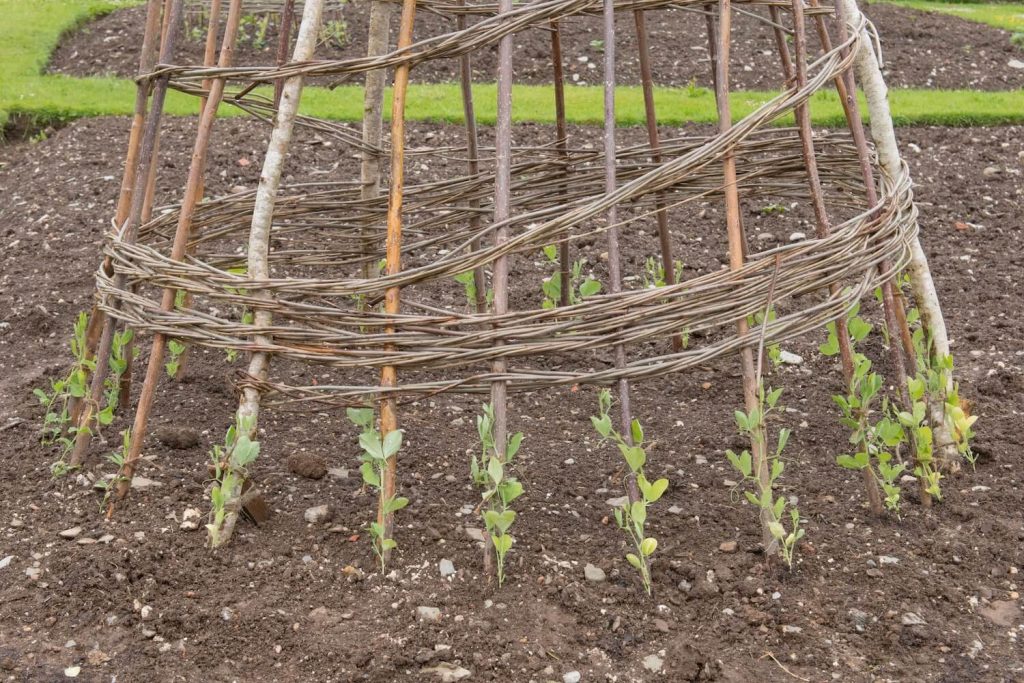
Tip: if space is at a premium, dwarf peas can be grown in hanging baskets or at the edge of a raised bed and allowed to trail down.
What sort of climbing aid is best for peas?
Depending on the height of the variety grown, pea plant supports can range from a simple row of small sticks to tall, prefabricated structures.
Smaller varieties and those labelled as self-supporting may benefit from just a simple row of ‘pea sticks’ around 50cm tall inserted into the ground for the plants to climb up. On the other hand, larger varieties and, especially those that will reach 2m high, will require a more robust and taller climbing aid to support their growth and weight as they mature.
Simple supports for peas can be as basic as horizontal strings or chicken wire mesh held upright between two wooden poles or lengths of rebar. As well as trellises of bamboo canes or string, or even plastic pea netting. Either way, whichever support is chosen, you should make sure it is held firmly in place as once covered with pea plants it will catch the wind like a sail.

In a more formal or ornamental setting, you can use prefabricated metal or wooden obelisks or wigwams to support peas. Which, even though more expensive and need storing over the winter, will often last many years and be structurally sound when laden with pods.
Tip: peas can also be grown using sweet corn (Zea mays) as a support for them to climb up. However, you may have to sow your peas a little later than usual, as corn does not tend to be tall enough to be a climbing aid until around mid-summer.
How to build your own pea trellis
For a natural look, you can collect pea sticks or stakes from coppiced hazel (Corylus avellana) or other wood to support peas. To make a support or trellis out of pea sticks, simply insert the thicker end into the soil, allowing the thinner branches to intertwine for the peas to grow up and between.
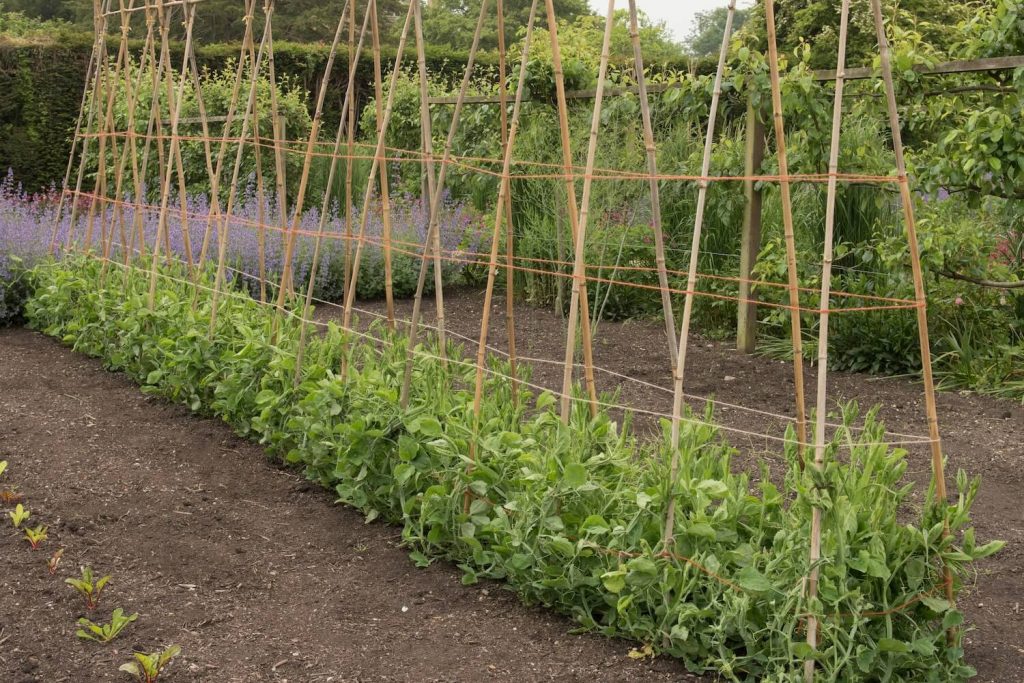
A pea trellis can also be constructed from general gardening materials you may already have. Similar to a climbing bean (Phaseolus vulgaris) or sweet pea (Lathyrus odoratus) trellis, bamboo canes can be pushed into the soil 30cm apart at a slight angle. Tie the two canes together to make a tent-like shape. You can add more canes until you reach the desired length of support. To make the structure sound, add cross beams at the top and along the sides if required. This method can also be used to make round wigwam supports, which can be used either in the ground or in a large container.
If you have some spare wire mesh or netting, this can also be used. Metal rebar or bamboo canes can either be threaded through or tied to the mesh and inserted into the ground to hold the mesh upright. However, for taller cultivars, a tent or wigwam-shaped trellis is more advisable due to their increased stability when covered with peas and foliage.

It can be tricky to know when your peas are ready to pick. Learn more about when and how to harvest peas in our feature article.



















